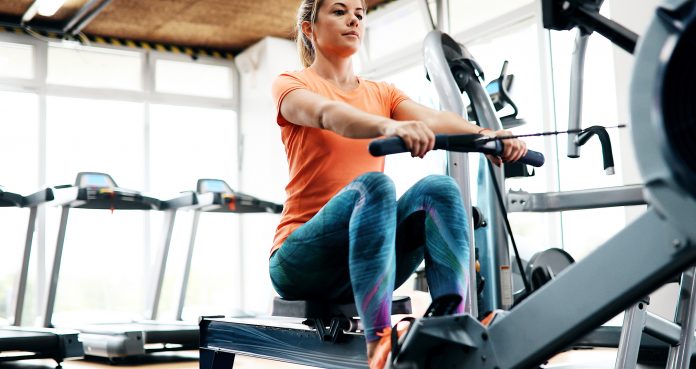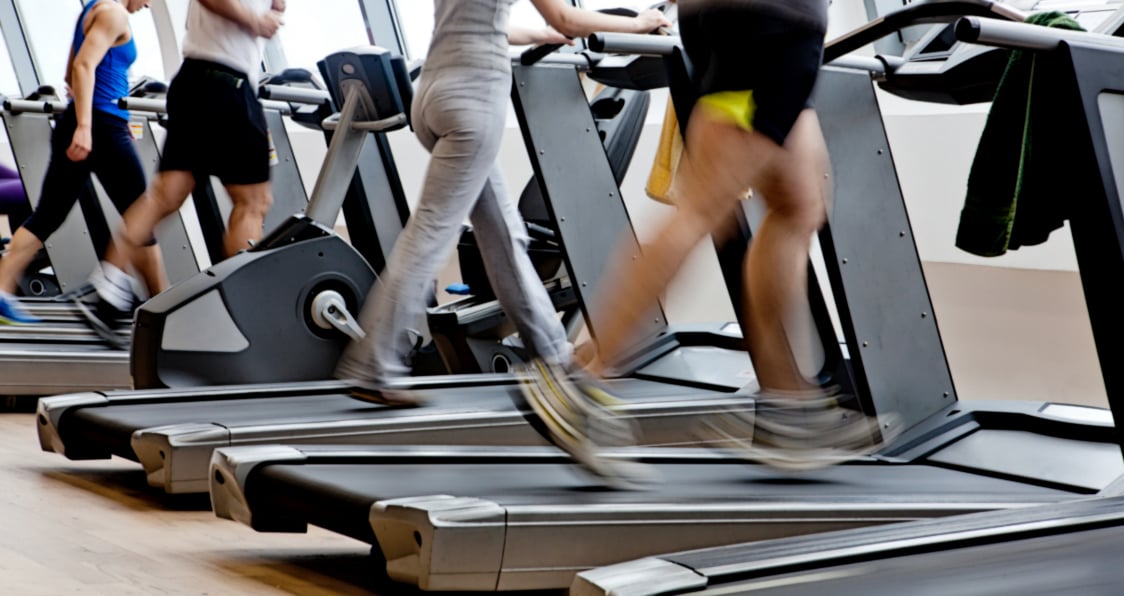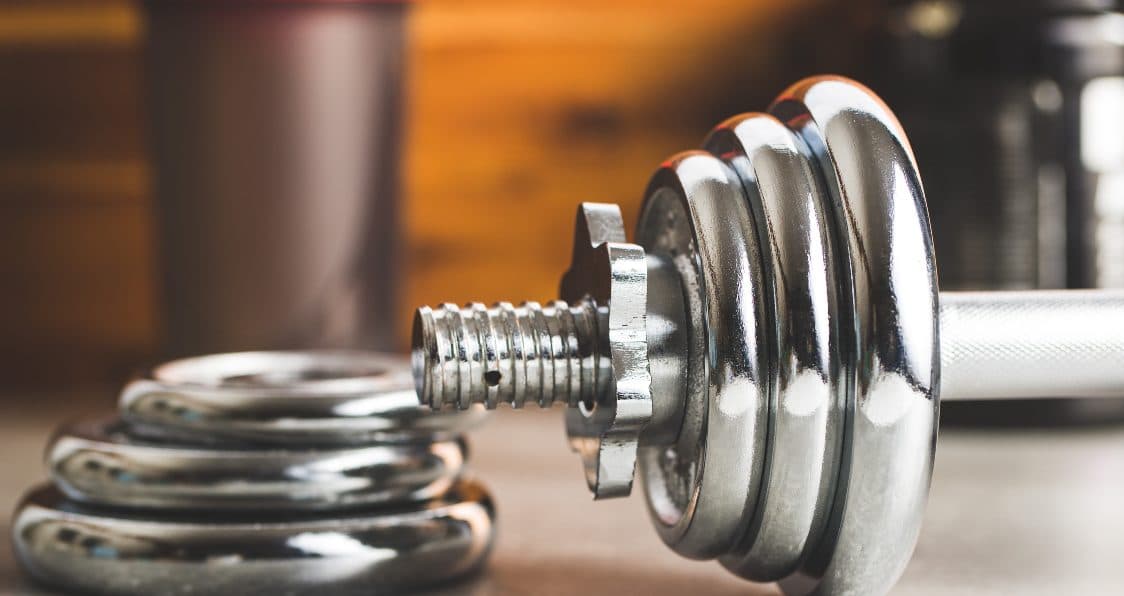
Whether you do cardio or weights first during a workout offers different benefits.
Should you do cardio or weights first in the gym? This has been a long-standing debate within fitness circles, much like the ongoing discussions about stretching before or after training. Some fitness enthusiasts advocate avoiding cardio altogether for fear of losing gains, but is this belief entirely supported by evidence? Let’s dive in!
Implementing cardio and weights in your fitness goals gives you more established training. Doing weights helps to boost bone health, preserve your muscle mass, and make daily activities easier. On the other hand, cardio is excellent for your heart, helps you lose weight, and is better for your immune system.
Research shows that cardio and weights could help you live longer (1). However, fitting them both into your routine can be tricky, especially if you don’t have too much time and have to combine both. So, should you do cardio or weights first in the gym?
The answer to this depends on many factors. In this guide, we consider these and address other popular questions that you might have about combining them. Stressing too much over the answer to this question can be counterproductive to your fitness goals, so let’s put it to rest once and for all.
Importance of Cardio
Cardio aids weight loss. Last year, bodybuilder Michal Krizo learned the hard way after losing out in the Olympia due to his conditioning. One of the changes he made to his routine for improvement is the addition of cardio, which can help you burn more calories.
Aerobic exercises are great for the heart and those with heart diseases. You can even combine strength training with cardio in what is known as high-intensity interval training (HIIT) to improve your heart health (2). Since heart issues are prevalent in bodybuilding and one of the leading causes of death in American, doing cardio is necessary for your health.
Cardio Before Weights
There are many benefits to doing cardio before weights. The first is that low-intensity cardio can serve as a way to warm up your muscles and prevent injury. Also, if your goal is to maximize the benefits of cardio, doing weights before could inhibit your performance (3).
Cardio before weights is also better for improving endurance. For example, those training for a race might need help working on their speed if they have been lifting beforehand. Doing cardio on a treadmill first will help you maximize energy and hit your running goals.
Cardio After Weights
Lifting weights first is best for those looking to build muscle and strength, especially if you’re working on your lower body muscles. You’ll be better able to focus on growing your muscles and have enough energy to do the reps necessary for progress (4). If you do cardio first, you’ll use up some of that energy prior, making your training harder, which could lead to injury and not using the weight you’re otherwise capable of.
Cardio also improves circulation, helping with muscle soreness after lifting weights — if you keep the cardio light.
How Much Cardio Should You Do After Weights?
The answer to this question depends on your goal. The general prescription by standard organizations and experts is about 150 minutes of cardio in a week (5). This means about 25 minutes daily if you exercise six days a week.
It’s important to note that the recommendations here are for moderate-intensity cardio. This means that your biceps workout may not count. However, if you turn your weight training workout into a circuit or add supersets, you can make it a hybrid cardio and lifting session.
Does Cardio Affect Muscle Growth?
This is so important because nobody wants to lose their gains after all that time training. Cardio, in moderation, won’t affect your gains and can help you burn more fat. As mentioned, some light cardio before a workout is an adequate warm-up to help you lift more weight. However, many experts and professional bodybuilders believe too much cardio can lead to muscle atrophy and impact workout performance.
Besides how much cardio you do, your nutrition is also essential. Paying attention to your diet and eating enough calories is important to maintain your gains. Protein intake is also essential; research supports around 2.3-3.1 g/kg of lean body mass daily to preserve and build muscle (6). Consuming carbohydrates for the necessary energy and muscle glycogen is also essential.
The Best Way to Combine Cardio and Weights
Sometimes, when it comes to combining them, logistics takes the decision out of your hands. For example, running to the gym might be more practical before your weightlifting session. Or you could show up at the gym, and all the endurance machines are in use, so you have to lift weights first.
Adding variety to your workouts can help make it manageable to do both on the same day. So, when lifting heavy, you could try other forms of cardio like cycling, swimming, or using the SkiErg. Running is a more tasking form of cardio that tells your brain it is too tired to do heavy work afterward.
You can also use one type of training to complement the other. For example, as we mentioned earlier, doing light cardio can help reduce muscle soreness after lifting heavy lifting by improving circulation. You can also do a low-intensity cardio workout as warmups for your strength training.
Wrapping Up
There’s no one correct answer regarding doing cardio before or after weights. The best solution for you depends on your fitness goals. Try both approaches to see which works for you. Remember that combining cardio and weightlifting in your training offers excellent benefits and is recommended for total well-being and health.
Follow us on Instagram, Facebook, and Twitter for more fitness knowledge!
References
- Coleman, C. J., McDonough, D. J., Pope, Z. C., & Pope, C. A. (2022). Dose-response association of aerobic and muscle-strengthening physical activity with mortality: a national cohort study of 416 420 US adults. British journal of sports medicine, bjsports-2022-105519. Advance online publication. https://doi.org/10.1136/bjsports-2022-105519
- Kemi, O. J., & Wisloff, U. (2010). High-intensity aerobic exercise training improves the heart in health and disease. Journal of cardiopulmonary rehabilitation and prevention, 30(1), 2–11. https://doi.org/10.1097/HCR.0b013e3181c56b89
- Conceição, M., Cadore, E. L., González-Izal, M., Izquierdo, M., Liedtke, G. V., Wilhelm, E. N., Pinto, R. S., Goltz, F. R., Schneider, C. D., Ferrari, R., Bottaro, M., & Kruel, L. F. (2014). Strength training prior to endurance exercise: impact on the neuromuscular system, endurance performance and cardiorespiratory responses. Journal of human kinetics, 44, 171–181. https://doi.org/10.2478/hukin-2014-0123
- Panissa, V. L., Tricoli, V. A., Julio, U. F., Ribeiro, N., de Azevedo Neto, R. M., Carmo, E. C., & Franchini, E. (2015). Acute effect of high-intensity aerobic exercise performed on treadmill and cycle ergometer on strength performance. Journal of strength and conditioning research, 29(4), 1077–1082. https://doi.org/10.1519/JSC.0000000000000706
- Lee, P. G., Jackson, E. A., & Richardson, C. R. (2017). Exercise Prescriptions in Older Adults. American family physician, 95(7), 425–432.
- Helms, E. R., Aragon, A. A., & Fitschen, P. J. (2014). Evidence-based recommendations for natural bodybuilding contest preparation: nutrition and supplementation. Journal of the International Society of Sports Nutrition, 11, 20. https://doi.org/10.1186/1550-2783-11-20

















